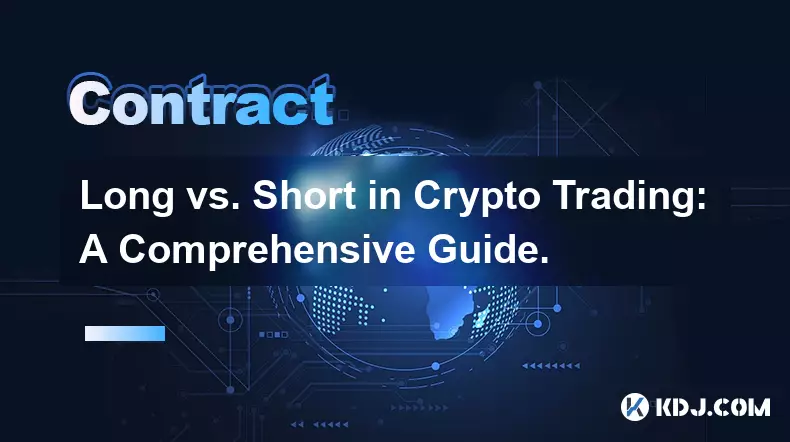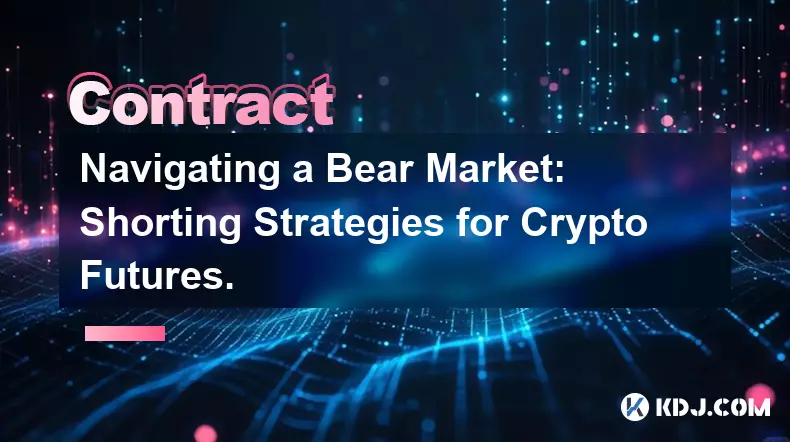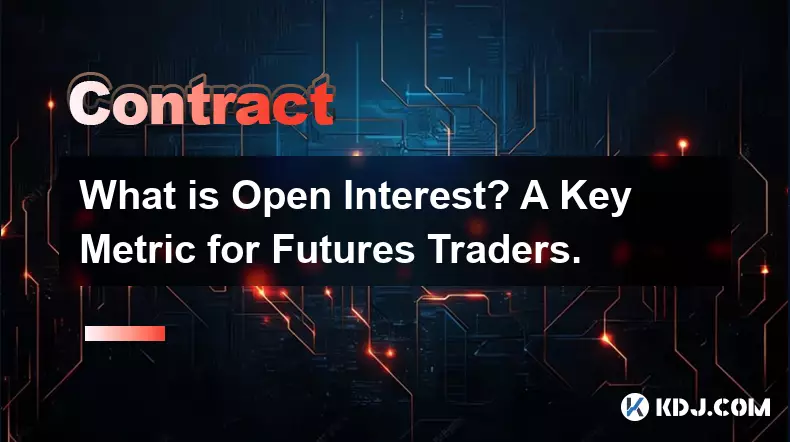-
 bitcoin
bitcoin $99177.955738 USD
-7.32% -
 ethereum
ethereum $3187.183061 USD
-12.38% -
 tether
tether $0.999809 USD
0.00% -
 xrp
xrp $2.117933 USD
-9.42% -
 bnb
bnb $906.710033 USD
-9.17% -
 solana
solana $149.367737 USD
-10.74% -
 usd-coin
usd-coin $0.999816 USD
0.01% -
 tron
tron $0.281498 USD
-0.38% -
 dogecoin
dogecoin $0.156292 USD
-8.00% -
 cardano
cardano $0.500744 USD
-10.19% -
 hyperliquid
hyperliquid $38.087358 USD
-4.58% -
 chainlink
chainlink $14.097831 USD
-8.54% -
 bitcoin-cash
bitcoin-cash $463.329916 USD
-9.22% -
 ethena-usde
ethena-usde $0.999078 USD
-0.01% -
 unus-sed-leo
unus-sed-leo $9.475862 USD
-0.79%
A Guide to Swing Trading XRP Perpetual Contracts
XRP perpetual contracts allow leveraged, indefinite speculation on price without owning XRP, using funding rates to align with spot markets.
Oct 28, 2025 at 09:00 am

Understanding XRP Perpetual Contracts
1. XRP perpetual contracts are derivative financial instruments that allow traders to speculate on the price of XRP without owning the underlying asset. Unlike traditional futures, these contracts do not have an expiration date, enabling positions to be held indefinitely as long as margin requirements are met.
2. Funding rates play a crucial role in perpetual contracts. These periodic payments are exchanged between long and short position holders to keep the contract price aligned with the spot market. Traders must monitor funding rates closely, as high positive rates can erode profits for long positions, while high negative rates impact short positions.
3. Leverage is available on most perpetual contract platforms, often ranging from 5x to 100x. While leverage amplifies potential gains, it also increases the risk of liquidation. Proper risk management, including setting stop-loss orders and avoiding over-leveraging, is essential when trading XRP perpetuals.
4. The bid-ask spread and liquidity vary across exchanges. High liquidity ensures tighter spreads and faster order execution, which is particularly important during volatile market movements. Binance, Bybit, and OKX are among the top platforms offering robust XRP perpetual markets.
Identifying Swing Trading Opportunities
1. Swing trading relies on capturing medium-term price movements, typically lasting from several hours to several days. To identify such opportunities in XRP, traders analyze technical indicators like moving averages, RSI (Relative Strength Index), and MACD (Moving Average Convergence Divergence).
2. Chart patterns such as ascending triangles, flags, and double bottoms often signal potential breakouts or reversals. For instance, a breakout above resistance on increased volume may indicate the start of an upward swing, favoring long entries.
3. Support and resistance levels derived from historical price action help define entry and exit points. Fibonacci retracement levels are frequently used to anticipate pullbacks within a broader trend, offering strategic zones to enter trades.
4. Volume analysis complements price action. A surge in trading volume during a breakout adds credibility to the move, reducing the likelihood of a false signal. Conversely, low-volume breakouts should be treated with caution.
Risk Management Strategies
1. Position sizing is critical in preserving capital. Most professional swing traders allocate only a small percentage of their total portfolio—often between 1% and 5%—to a single trade. This limits exposure even if the market moves sharply against the position.
2. Setting a stop-loss below key support for long trades, or above resistance for short trades, helps minimize losses during unexpected reversals. Trailing stops can also be employed to lock in profits as the price moves favorably.
3. Avoid holding positions through major news events such as regulatory announcements or exchange delistings, which can trigger sharp volatility. XRP’s price has historically reacted strongly to legal developments involving Ripple Labs.
4. Monitoring open interest and liquidation heatmaps provides insight into market sentiment. Sudden spikes in long or short liquidations can precede sharp price reversals, serving as early warning signs for active traders.
Executing and Monitoring Trades
1. Once a setup is confirmed, enter the trade with a limit order to avoid slippage, especially during fast-moving markets. Market orders may execute at unfavorable prices during sudden volatility.
2. After entry, actively monitor the trade using real-time charts and alerts. Key metrics include unrealized PnL, margin level, and estimated liquidation price. Most platforms offer dashboard widgets to track these parameters efficiently.
3. Take-profit levels should be based on technical targets, such as previous swing highs or measured moves derived from chart patterns. Scaling out of positions—closing partial lots at different targets—can optimize returns while reducing risk.
4. Adjust stop-loss levels as the trade progresses to protect gains. For example, after a strong upward move, moving the stop to breakeven eliminates downside risk on the remaining position.
Frequently Asked Questions
What is the difference between spot trading and perpetual contracts?Spot trading involves buying and owning actual XRP tokens, while perpetual contracts allow speculation on price movements using leverage without ownership. Perpetuals include funding fees and carry liquidation risks absent in spot trading.
How do funding rates affect my XRP perpetual position?Funding rates are paid every eight hours between long and short holders. If you hold a long position when funding is positive, you pay the rate; if short, you receive it. High funding can significantly impact profitability over time.
Can I swing trade XRP during low volatility periods?Swing trading becomes less effective when volatility is low because price movements are smaller and trends less defined. Traders often wait for volatility expansions, signaled by indicators like the Average True Range (ATR), before initiating new setups.
What timeframes are best for XRP swing trading?The 4-hour and daily charts are commonly used for identifying swing trade setups. Lower timeframes like 1-hour can assist in refining entry points, while higher timeframes provide context for the overall trend direction.
Disclaimer:info@kdj.com
The information provided is not trading advice. kdj.com does not assume any responsibility for any investments made based on the information provided in this article. Cryptocurrencies are highly volatile and it is highly recommended that you invest with caution after thorough research!
If you believe that the content used on this website infringes your copyright, please contact us immediately (info@kdj.com) and we will delete it promptly.
- Bitcoin's Wild Ride: Saylor, Kiyosaki, and the Quest for $200K
- 2025-11-05 10:50:13
- Culex, Cardano, and Aster: A Crypto Cocktail of Mosquitoes, Dips, and CZ Fuel
- 2025-11-05 11:00:17
- Crypto Presales, Coin Growth, and Established Coins: Navigating the 2025 Buzz
- 2025-11-05 11:00:17
- La Culex, Crypto Investment, and Pudgy Penguins: A NYC Perspective
- 2025-11-05 10:30:13
- Zcash Defies Crypto Crash: Reversal Risk on the Horizon?
- 2025-11-05 11:00:01
- Score Big with BetMGM: NBA, NFL, and the TOP150 Bonus Code
- 2025-11-05 08:50:13
Related knowledge

Long vs. Short in Crypto Trading: A Comprehensive Guide.
Nov 04,2025 at 07:39pm
Understanding Long and Short Positions in Cryptocurrency Markets1. In crypto trading, taking a long position means buying a cryptocurrency with the ex...

The 2025 Guide to Profitable Crypto Futures and Derivatives Trading.
Nov 01,2025 at 07:39pm
Understanding Crypto Futures and Derivatives in 20251. Crypto futures are financial contracts obligating the buyer to purchase, or the seller to sell,...

Navigating a Bear Market: Shorting Strategies for Crypto Futures.
Nov 03,2025 at 07:18pm
Understanding Bear Market Dynamics in Crypto1. A bear market in the cryptocurrency space is characterized by prolonged price declines, often driven by...

What is Open Interest? A Key Metric for Futures Traders.
Nov 03,2025 at 11:18pm
Understanding Open Interest in Cryptocurrency Futures1. Open interest refers to the total number of active futures contracts that have not been settle...

How to Trade Crypto Futures on Bybit: A Complete Walkthrough.
Nov 04,2025 at 10:50pm
Setting Up Your Bybit Account for Futures Trading1. Visit the official Bybit website and click on the 'Sign Up' button to create a new account. Provid...

Identifying Support and Resistance Levels for Crypto Contract Trading.
Nov 04,2025 at 06:15pm
Understanding Support and Resistance in Crypto Markets1. Support and resistance levels are foundational concepts in technical analysis, especially wit...

Long vs. Short in Crypto Trading: A Comprehensive Guide.
Nov 04,2025 at 07:39pm
Understanding Long and Short Positions in Cryptocurrency Markets1. In crypto trading, taking a long position means buying a cryptocurrency with the ex...

The 2025 Guide to Profitable Crypto Futures and Derivatives Trading.
Nov 01,2025 at 07:39pm
Understanding Crypto Futures and Derivatives in 20251. Crypto futures are financial contracts obligating the buyer to purchase, or the seller to sell,...

Navigating a Bear Market: Shorting Strategies for Crypto Futures.
Nov 03,2025 at 07:18pm
Understanding Bear Market Dynamics in Crypto1. A bear market in the cryptocurrency space is characterized by prolonged price declines, often driven by...

What is Open Interest? A Key Metric for Futures Traders.
Nov 03,2025 at 11:18pm
Understanding Open Interest in Cryptocurrency Futures1. Open interest refers to the total number of active futures contracts that have not been settle...

How to Trade Crypto Futures on Bybit: A Complete Walkthrough.
Nov 04,2025 at 10:50pm
Setting Up Your Bybit Account for Futures Trading1. Visit the official Bybit website and click on the 'Sign Up' button to create a new account. Provid...

Identifying Support and Resistance Levels for Crypto Contract Trading.
Nov 04,2025 at 06:15pm
Understanding Support and Resistance in Crypto Markets1. Support and resistance levels are foundational concepts in technical analysis, especially wit...
See all articles










































































